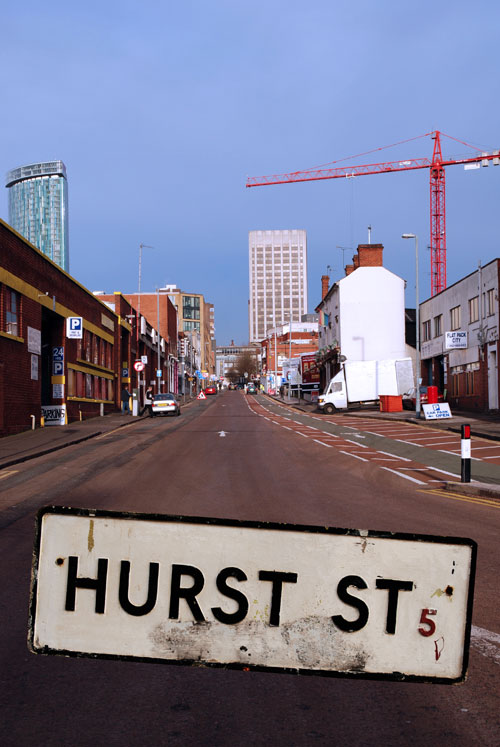Hurst Street
July 1980
Hurst Street has become the heart of Birmingham's vibrant Gay Village over the last fifteen years.

Previously a run down warehouse district characterised by post war industrial units and Victorian shops and housing, cut off from the rest of the city centre in the 1950s by the building of the Smallbrook Queensway section of the Inner Ring Road. (In the above picture c1950, the old Hippodrome Theatre Tower can be seen and in the foreground the construction of the Ringway Centre)
In the 1970s the top end of Hurst Street was a focus of gay life due to the presence of the Nightingale on Thorp Street and the Windmill bar in Albany House.

By the late 1980s a large swathe of land to the east of Hurst Street was cleared to make way for the Arcadian Centre. The only building left surviving is Missing (formerly The Australian Bar).
Many small businesses were lost including the famous Khan and Bell shop. (In the image above c1980, the dilapidated row of shops which made way for the Arcadian Centre can be seen. Khan and Bell was located towards the top end of Hurst Street)

By the early 90s a number of bars had opened along the street and the formation of the Gay Village we know today began.
The street has continually improved and in recent years has been a focus of the city-living trend and the explosion in leisure activities; with new apartments, restaurants and bars springing up. The ongoing regeneration is now creeping towards the down at heel lower end of the street.

Have a memory of this? Signup today and tell us about it! or login!